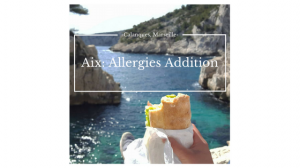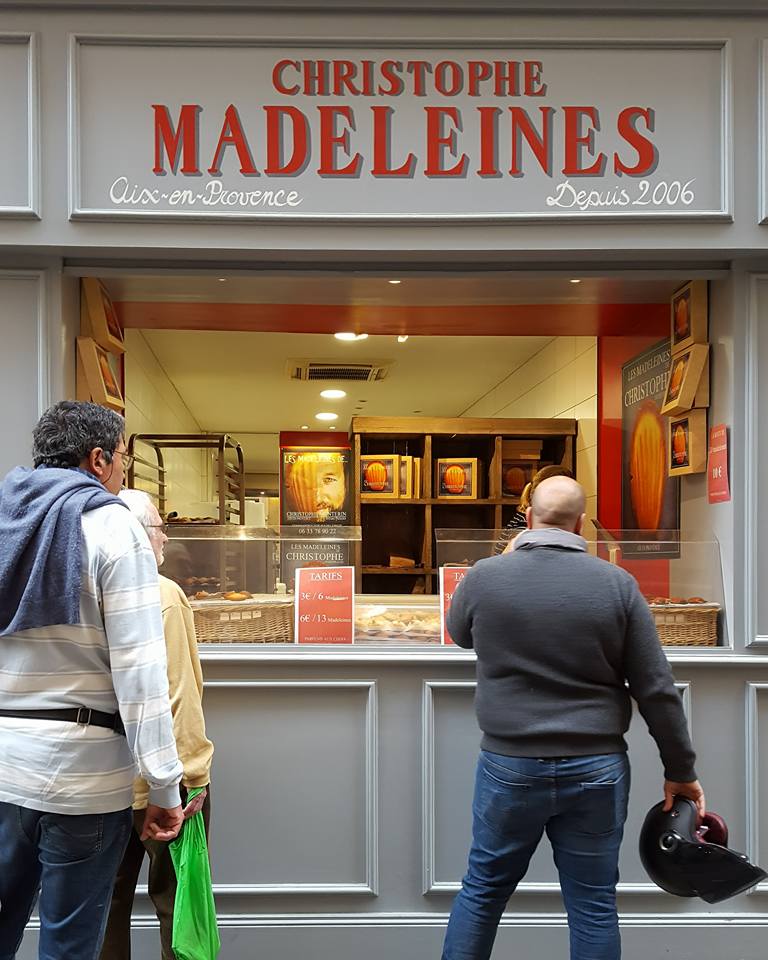 |
| A woman makes these little cakes and arranges them in baskets at her storefront to entice passerby. From what I've seen and heard, it works quite well. |
France really isn’t the easiest place to live with a nut allergy. Luckily, peanuts aren't a common ingredient in France (peanut butter is actually quite expensive and hard to find), but other nuts are all over. Almonds and hazelnuts play hide and seek exceptionally well in regionally popular desserts like macarons, calissons, madeleines, and these wheels of nougat that probably just stole your heart. Whether you'll be in France, or someplace else, do a bit of research to find out ingredients in some of the popular delicacies and pastries so you're not left in the dark when you are served an unfamiliar dish at dinner.
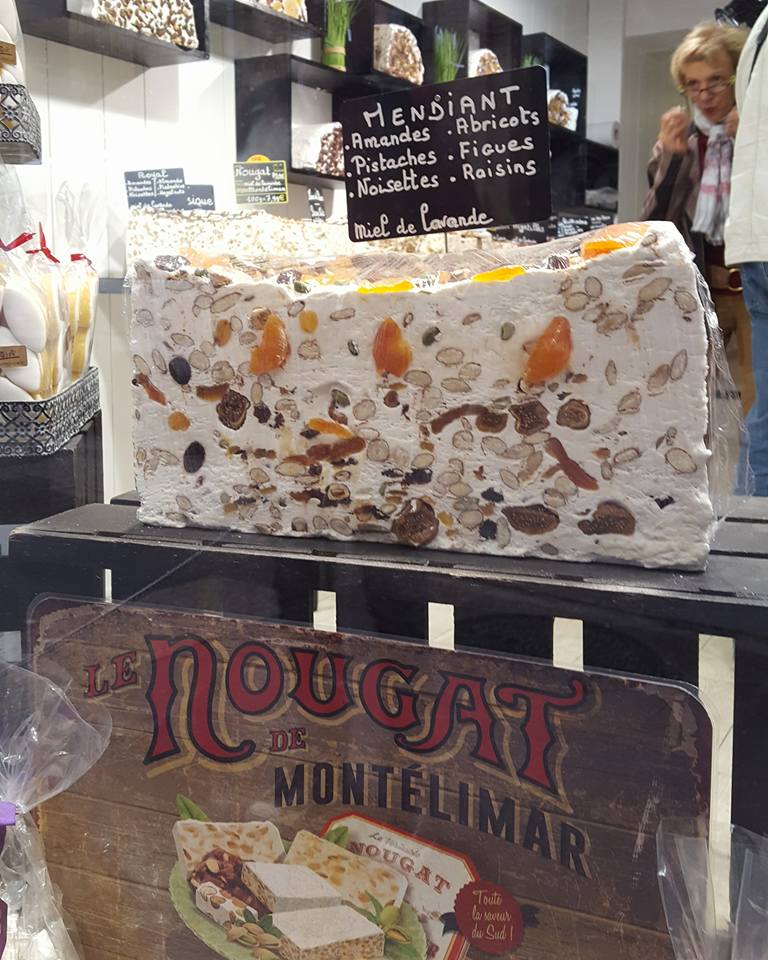 |
| Before Aix, my idea of nougat was the filling of a candy bar. Here -- it's a delicacy all on it's own, filled with dried fruits and nuts. |
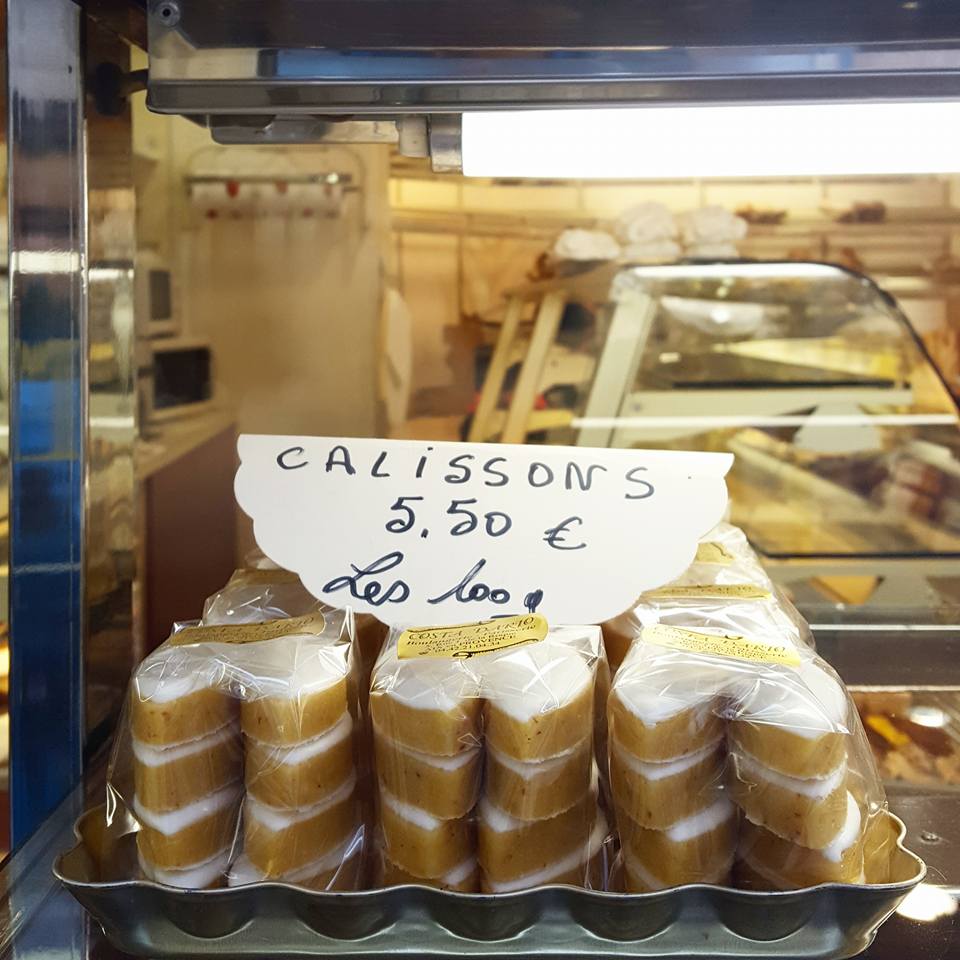 |
| Calissons are the signature candy of Aix-en-Provence. They're made of ground almonds with a thin layer of icing on top --from what I've heard, you either love 'em or you can't stand 'em. |
Traveling over the weekend to a place where you don't speak the language? Screenshot the translation of whatever you’re allergic to in the language of the country you’re visiting and write down the words to keep with you if you ever need to ask questions. You can also think of whatever you would typically ask a waiter regarding your allergy, and take a screenshot of its translation. (I know that google translate doesn’t always translate perfectly, but more often than not, the person you are trying to communicate with will understand.) In case you get into a pickle, it's also a good idea to throw some snacks into your backpack so you're not stuck without food. (I've been able to fly multiple countries on Ryanair and Easyjet with granola bars, carrots, and fresh fruits in my carry on with no problem!)
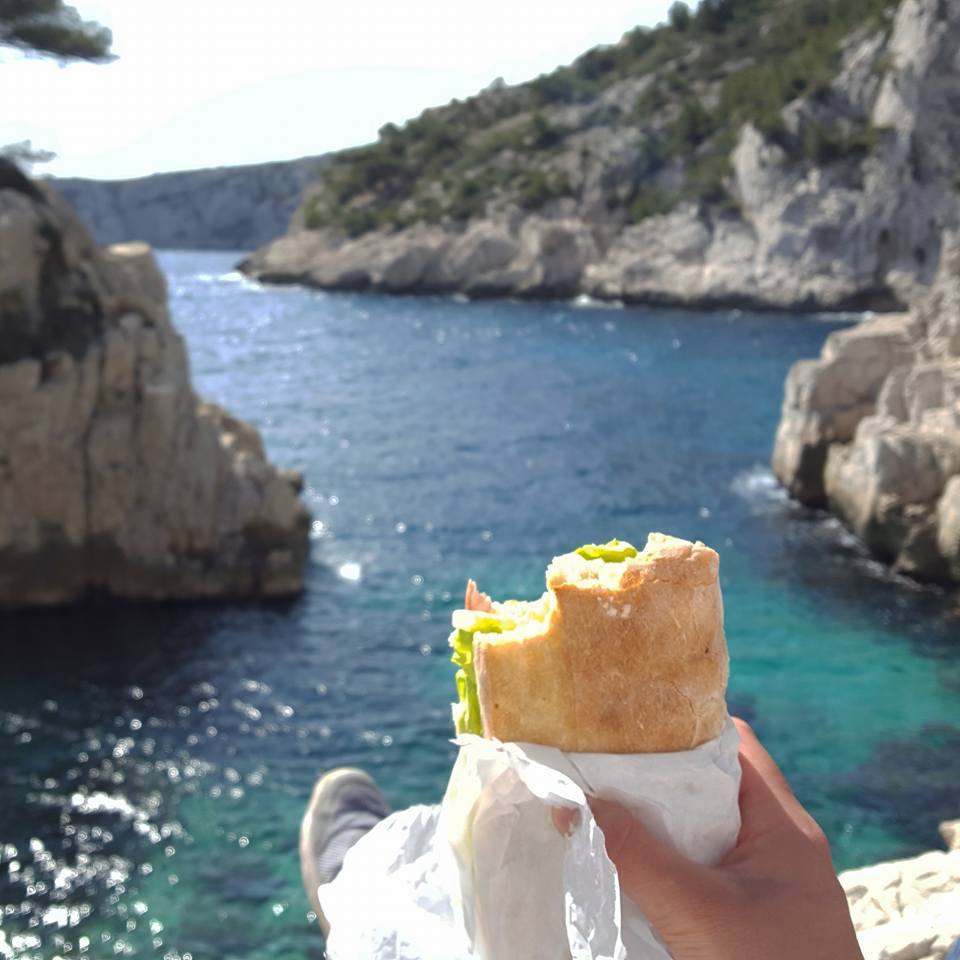 |
| Not only is preparing some of your own food for trips a cheaper and safer option, it's often healthier if you avoid processed foods. For me, a trip to the boulangerie and the farmers market will leave me with a fresh baguette and local produce and cheese to make the sandwich of d r e a m s. |
It can even be helpful to communicate your allergy as being more extreme than it actually is. Allergies are more of a recent phenomenon in Europe -- I’ve heard from several people, and found from my personal experiences, that Europeans are generally less familiar with severe allergies than Americans and less commonly understand that allergies can be fatal. You could tell a waitress that you are allergic to nuts, but she may perceive it as a mere taste preference.
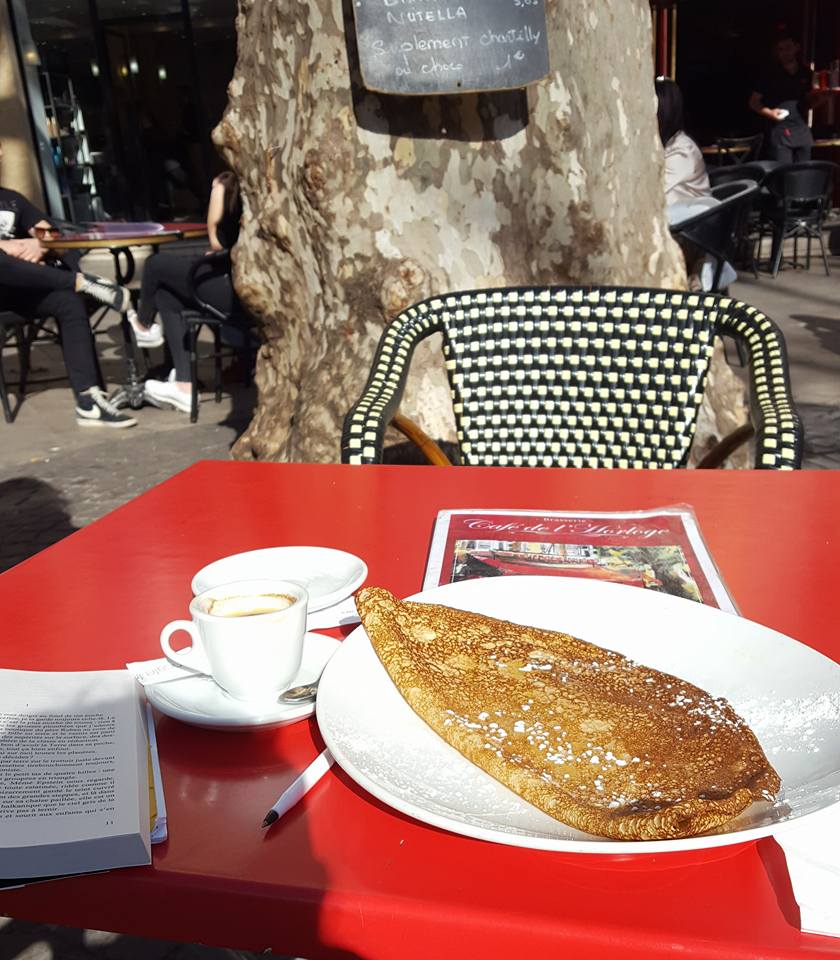 |
| This is my personal opinion..but... one cannot possibly go wrong with a crêpe. They're almost always nut-allergy safe, and simply amazing on all levels. (espresso, french novel, and table in the sunshine are optional, but encouraged.) |
Pro tip: Specificity is key. It turns out that different people have different definitions of what is classified as a nut — my host mother had tried to give me pine nuts once; she told me that they are not nuts, but actually seeds found in pine cones. Obviously, always trust your instincts in situations like this. (In case you need to see this in writing: your life is worth more than potentially offending someone.)
If you've been abroad with an allergy, what have you done to navigate language barriers and still fully experience the country? I'd love to hear in the comments! Wishing you a fantastic trip. Stay thriving, friends.
**Disclaimer: These are merely my tips and suggestions on how to deal with your allergies abroad based on my experiences traveling throughout Europe. In no way am I an expert on the subject, and I would suggest talking to your allergist if you have more specific questions.**
Sarah S. is the Spring 2017 MOJO Blogger in Aix-en-Provence, France. She is currently a Sophomore studying English Non Fiction Writing & French at University of Pittsburgh.








